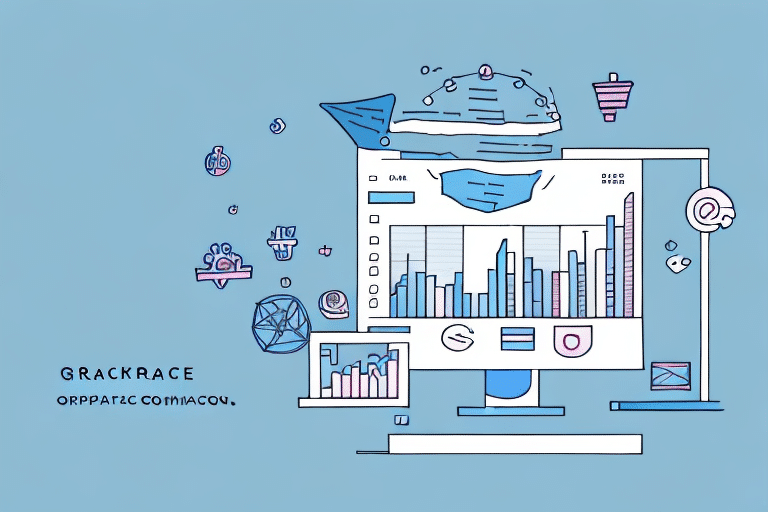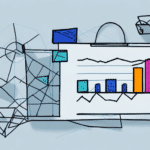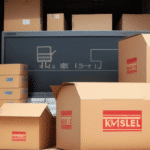Understanding the Importance of Back Order Rate: How to Measure It for E-Commerce Operations
Running an e-commerce business involves navigating various operational challenges, one of which is managing back orders effectively. If you're not measuring your back order rate (BOR), you might be overlooking critical data that can enhance your business operations and boost sales. This article delves into the significance of BOR, methods to measure it, and best practices to maintain a low BOR. Let's explore.
What is Back Order Rate and Why It Matters for Your E-Commerce Business?
Back Order Rate (BOR) is the percentage of orders that cannot be fulfilled immediately due to stockouts and must be shipped at a later date. A high BOR often signals inefficiencies in inventory management, poor demand forecasting, or inadequate communication with suppliers. This can lead to negative customer experiences, decreased loyalty, and reduced sales. For instance, according to a Statista report, customer satisfaction is significantly impacted by order fulfillment reliability.
Improving your BOR involves implementing a robust inventory management system that tracks stock levels in real time and alerts you when items are running low. Solutions like Shopify, BigCommerce, and Zoho Inventory offer features that help prevent stockouts and ensure timely order fulfillment. Additionally, suggesting alternative products or similar items to customers when an item is out of stock can mitigate the negative impact of a high BOR.
Effective communication with customers about their orders and any potential delays is also crucial. Providing regular updates on the status of back-ordered items and offering estimated delivery dates can help manage customer expectations and reduce frustration. Prioritizing BOR and taking proactive steps to improve it fosters a positive customer experience and increases the likelihood of repeat business.
The Negative Impact of High Back Order Rates on Your Business
A high BOR can adversely affect your business in multiple ways:
- Customer Dissatisfaction: Increased customer complaints and negative online reviews can tarnish your brand's reputation.
- Loss of Trust: Studies indicate that 84% of consumers are unlikely to return to a brand after one negative experience.
- Decreased Sales: Frustrated customers may turn to competitors, resulting in lost sales and opportunities for repeat business.
- Increased Operational Costs: Managing and processing back orders requires additional time and resources.
Moreover, a persistently high BOR can lead to strained relationships with suppliers and manufacturers. Consistently high back orders may cause suppliers to hesitate in working with you, limiting your access to essential products and materials and ultimately impacting your ability to meet customer demand.
Benefits of Keeping Your Back Order Rate Low
Maintaining a low BOR offers several advantages:
- Enhanced Customer Satisfaction and Loyalty: Reliable order fulfillment builds trust and encourages repeat purchases.
- Increased Sales: Satisfied customers are more likely to make multiple purchases and refer others to your brand.
- Reduced Operational Costs: Efficient order management minimizes the time and resources spent on handling back orders.
- Positive Market Reputation: Timely deliveries lead to positive reviews and brand recommendations, attracting new customers.
- Optimized Inventory Management: Keeping track of inventory levels and monitoring BOR helps in identifying high-demand products and adjusting stock accordingly, preventing overstocking or understocking.
Measuring Your Back Order Rate: Tools and Techniques for E-Commerce Operations
Accurately measuring your BOR is essential for assessing your e-commerce business's performance and identifying improvement areas. Here are some tools and techniques to measure BOR:
- Inventory Management Software: Platforms like Shopify, BigCommerce, and Zoho Inventory offer real-time inventory tracking and alert systems to prevent stockouts.
- Order Management Systems (OMS): Solutions such as Brightpearl and Orderhive help track orders and inventory across multiple sales channels efficiently.
- Sales and Order Reports: Analyzing sales data provides insights into the number of back orders and the percentage of orders that were not fulfilled immediately.
It's important to treat BOR measurement as an ongoing process. Regular monitoring helps in identifying trends and patterns in inventory and order management, enabling informed decisions about restocking, pricing adjustments, and fulfillment process improvements. Tools like Tableau and Microsoft Power BI can enhance your data analysis capabilities.
How to Calculate Your Back Order Rate and Identify Areas for Improvement
Calculating BOR is straightforward:
BOR (%) = (Number of Back Orders / Total Number of Orders) x 100
For example, if you received 1,000 orders in a month with 250 back orders, your BOR would be 25%.
To identify areas for improvement, consider the following steps:
- Analyze the Causes of Back Orders: Determine if stockouts are due to inventory shortages, inaccurate demand forecasting, or delays in supplier deliveries.
- Review Inventory Management Processes: Optimize demand forecasting, establish safety stock levels, and reduce supplier lead times.
- Enhance Supplier Communication: Strengthen relationships with suppliers to ensure timely deliveries and adequate stock levels.
- Invest in Technology: Implement automated inventory management systems or advanced OMS to improve efficiency and accuracy.
Additionally, assess the impact of BOR on customer satisfaction. Delayed shipments can lead to dissatisfied customers, so it's crucial to have a communication plan in place that informs customers about the status of their orders and provides realistic delivery timelines.
Tracking the frequency and duration of back orders can help identify recurring issues within your supply chain or inventory management processes. Addressing these proactively can prevent minor issues from escalating into significant problems.
Best Practices to Reduce Back Order Rates and Improve Customer Satisfaction
Reducing BOR requires a strategic and customer-focused approach. Implement the following best practices:
- Maintain Accurate Inventory Levels: Utilize real-time inventory tracking and automated management systems to ensure stock levels are always up to date.
- Enhance Forecasting Accuracy: Analyze sales data and market trends to predict demand more accurately.
- Establish Safety Stock Levels: Maintain buffer stock to cushion against demand spikes or supply delays.
- Strengthen Supplier Relationships: Communicate regularly with suppliers to minimize lead times and ensure consistent stock availability.
- Communicate Transparently with Customers: Keep customers informed about their order status and any potential delays.
- Offer Incentives: Provide discounts or free shipping to customers affected by back orders to enhance their experience despite delays.
Strategies to Manage Inventory and Avoid Stockouts that Lead to Back Orders
Effective inventory management is key to preventing stockouts and minimizing back orders. Consider these strategies:
- Conduct Regular Inventory Audits: Periodically review stock levels to identify and address potential shortages.
- Implement Advanced Inventory Management Software: Use platforms that provide real-time tracking and predictive analytics to foresee stock shortages.
- Adopt Just-In-Time (JIT) Inventory Systems: Reduce the risk of overstocking and stockouts by synchronizing inventory levels with actual demand.
- Utilize Sales and Demand Forecasting: Predict future sales trends to ensure adequate stock levels for high-demand products.
- Enhance Supplier Communication: Work closely with suppliers to ensure timely replenishments and adequate stock levels.
Leveraging Technology: Using Data Analytics to Improve Your Back Order Rate
Data analytics can offer invaluable insights into your e-commerce operations, enabling you to enhance your BOR. Here’s how:
- Analyze Sales Trends and Customer Behavior: Use data analytics tools to understand purchasing patterns and anticipate demand.
- Implement Sales Forecasting Tools: Predict future sales to minimize stockouts and ensure sufficient inventory levels.
- Adopt Inventory Forecasting Systems: Forecast future stock needs based on historical data and market trends.
- Use Order Management Systems (OMS): Track orders and inventory across multiple channels to maintain accurate stock levels.
- Automate Inventory Management: Enhance accuracy and efficiency by automating stock tracking and reorder processes.
The Role of Effective Communication in Managing Customer Expectations during Back Orders
Effective communication is vital in managing customer expectations when dealing with back orders. Consider the following practices:
- Be Transparent: Clearly communicate inventory levels and the status of back orders.
- Set Realistic Delivery Expectations: Provide accurate delivery timelines and update customers regularly on any changes.
- Use Clear and Concise Language: Avoid technical jargon and ensure your messages are easy to understand.
- Offer Incentives: Provide discounts or free shipping to compensate for any inconvenience caused by back orders.
- Maintain a Positive Tone: Communicate with empathy and understanding to reassure customers.
Handling Back Orders: Tips for Providing a Positive Customer Experience
Managing back orders effectively can enhance the customer experience despite delays. Here are some tips:
- Regular Communication: Keep customers informed about the status of their orders through emails or SMS updates.
- Offer Incentives: Provide discounts or free shipping as a gesture of appreciation for their patience.
- Provide Flexible Options: Allow customers to choose partial shipments or substitute products if available.
- Train Your Customer Service Team: Ensure your team is equipped to handle back order-related inquiries and resolve issues promptly.
Case Study: How One E-Commerce Business Improved Their Back Order Rate and Boosted Sales
ABC Pet Supplies, an e-commerce retailer specializing in pet products, faced challenges with a high BOR of 30%, leading to lost sales and declining customer satisfaction. To address this, they implemented a comprehensive inventory management system that provided real-time tracking and demand forecasting. Additionally, they enhanced communication with suppliers to reduce lead times and ensure consistent stock levels.
These measures resulted in reducing their BOR to 10%, significantly improving customer satisfaction and loyalty. The decrease in back orders led to a 20% increase in repeat purchases and a 15% boost in overall sales within six months.
Conclusion
Measuring and managing your Back Order Rate is essential for the success of your e-commerce business. By understanding the importance of BOR, accurately measuring it, and implementing best practices to maintain a low rate, you can enhance customer satisfaction, foster loyalty, and drive sales growth. Leveraging advanced technology and maintaining effective communication are critical components in managing back orders and ensuring a positive customer experience. Ultimately, prioritizing customer satisfaction through efficient order management is key to thriving in the competitive e-commerce landscape.




















